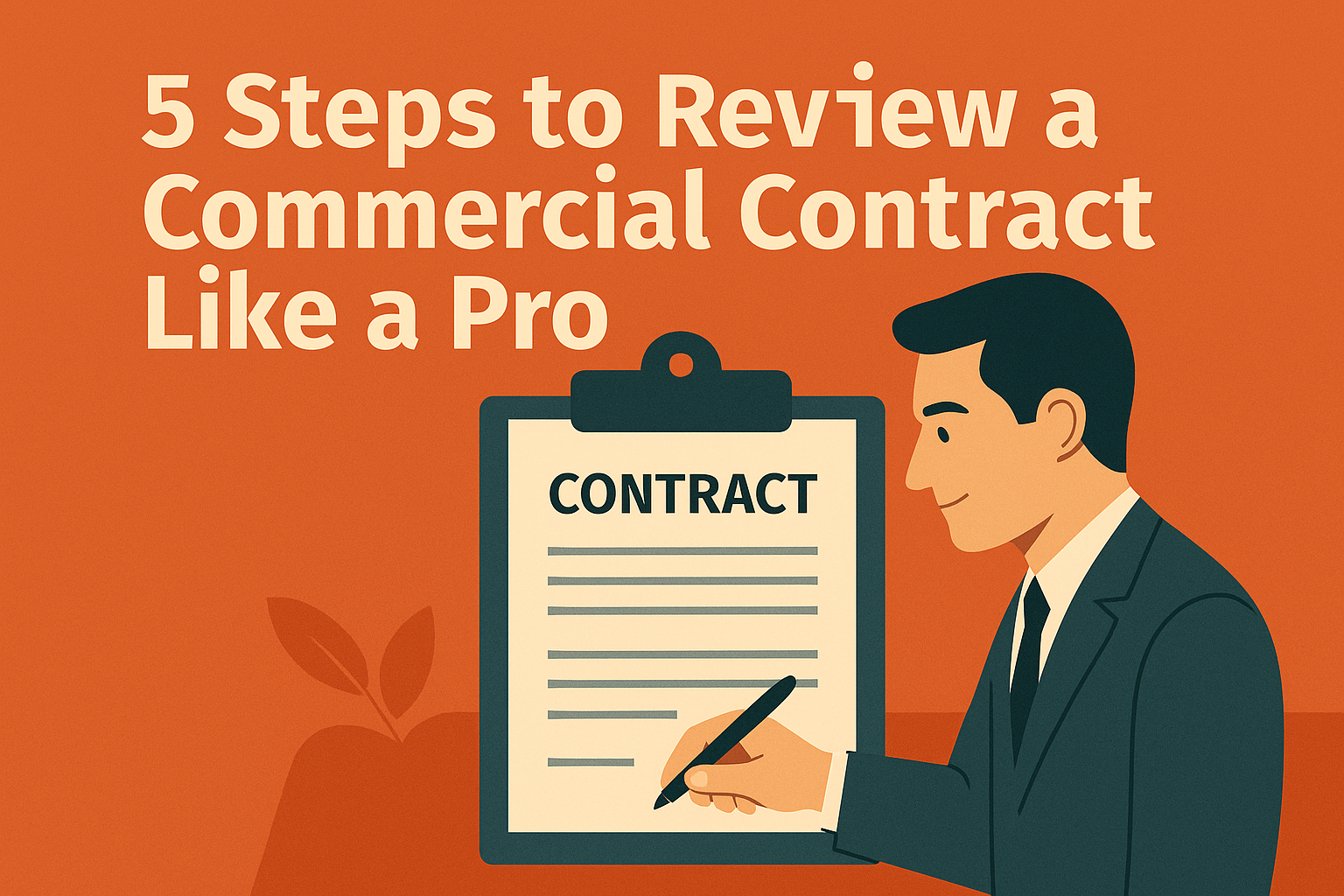A contract is at the core of any business relationship. The contract establishes what each party stands to gain from the business arrangement, and provides protection in case something goes wrong.
Accordingly, it’s imperative to draft contracts that clarify expectations and build in strong protections. Contract negotiation and drafting can be different from one deal to another, but there are several steps that are common to all contracts.

Six Contract Drafting Steps
These six steps are central to the creation of any business contract:
1. Define the Purpose and Scope of the Agreement
Before contract drafting actually starts, it’s crucial for the parties to come to a common understanding of the goals of a potential business relationship. The parties should communicate with each other to establish what they aim to achieve, including what each party will provide and what each will receive under the contract. For a commercial transaction, this entails identifying the goods, services, payments, and other obligations involved.
2. Outline Key Terms
Before drafting a contract, the parties often prepare a term sheet to outline the most important parts of the agreement in advance. This step facilitates the creation and negotiation of the actual contract.
Key terms to discuss include:
Deliverables and deadlines: What does each party need to do, and by when?
Payment terms: When money changes hands – whether for a purchase or for something else such as late payment fees – what are the required amounts, accepted currencies, payment methods, and deadlines?
Duration, termination, and renewal: How long will the contract last? What are the conditions for ending or renewing it?
3. Prepare the First Draft
One of the two parties uses its own template to create a first draft based on the term sheet. This role is typically determined by the type of agreement: a vendor, for example, will generally have its own template that it uses for all of its customers, while a company hiring a contractor will typically use its own template for a non-disclosure agreement.
In addition to the terms the parties have included in the term sheet, the first draft must include clauses that are essential to any business contract, such as:
Confidentiality: Protect sensitive information and provide repercussions for leaks
Dispute resolution: Define how disputes will be resolved (e.g., elect for arbitration or mediation instead of court, or establish court jurisdiction).
Enforcement: Establish the consequences for breach of contract. Remedies might include penalties, damages, or specific performance.
Force majeure: Address unforeseen events that may prevent contract performance.
Liability and indemnity: Specify the limits of liability and indemnification for actions taken under the agreement.
4. Review and Redline
The receiving party reviews the first draft to ensure alignment with their goals. The legal team works with business stakeholders or clients to identify issues and optimize clause language based on the business’s needs and preferred positions.
This process involves a back-and-forth exchange in which each party receives and reviews the other party’s proposed edits to the contract, delivered in the form of redlines. Each updated version of the contract ideally brings the parties closer to a final agreement.
5. Obtain Agreement and Signatures
Once (if) all parties agree to the terms laid out in the contract, it’s time to sign the agreement. This process used to involve mailing documents back and forth and even getting signatures notarized. These days, it’s more common to simply send a link via email so the signatories can execute the agreement electronically.
6. Store and Monitor
Each party retains copies of the signed contract. All parties must monitor compliance with the contract’s terms on an ongoing basis – both the other party’s, and their own. Proactive businesses track and analyze data on contract performance to improve their business agreements going forward.
Contract Drafting Challenges
There are plenty of potential challenges for lawyers when writing up contracts. Communication issues can lead to a lack of common understanding when it comes to the core terms of the agreement. Missed handoffs can lead to delays or noncompliant contracts getting signed. Inefficient processes can cause bottlenecks.
Legal teams need to be aware of these challenges and how to address them. One part of a successful contract drafting strategy is identifying and using helpful tech tools to get the job done.
Using Software Tools for Contract Drafting
There are lots of technology tools that help business teams create documents and automate workflows, but they’re not all equally helpful for legal teams. If you’re a lawyer who drafts contracts, you need dedicated contract drafting software. All-purpose software or AI tools are too unfocused to deliver reliable results.
Legal tech vendors have developed software and trained AI to work specifically with contracts. These are the tech tools you should consider when updating your contract drafting tech stack.
BoostDraft is one of those options. Our software is a practical, simple, secure solution that provides instant efficiency for lawyers drafting contracts.
Want to see how much more efficient your team can be when creating contracts? Get a demo!


